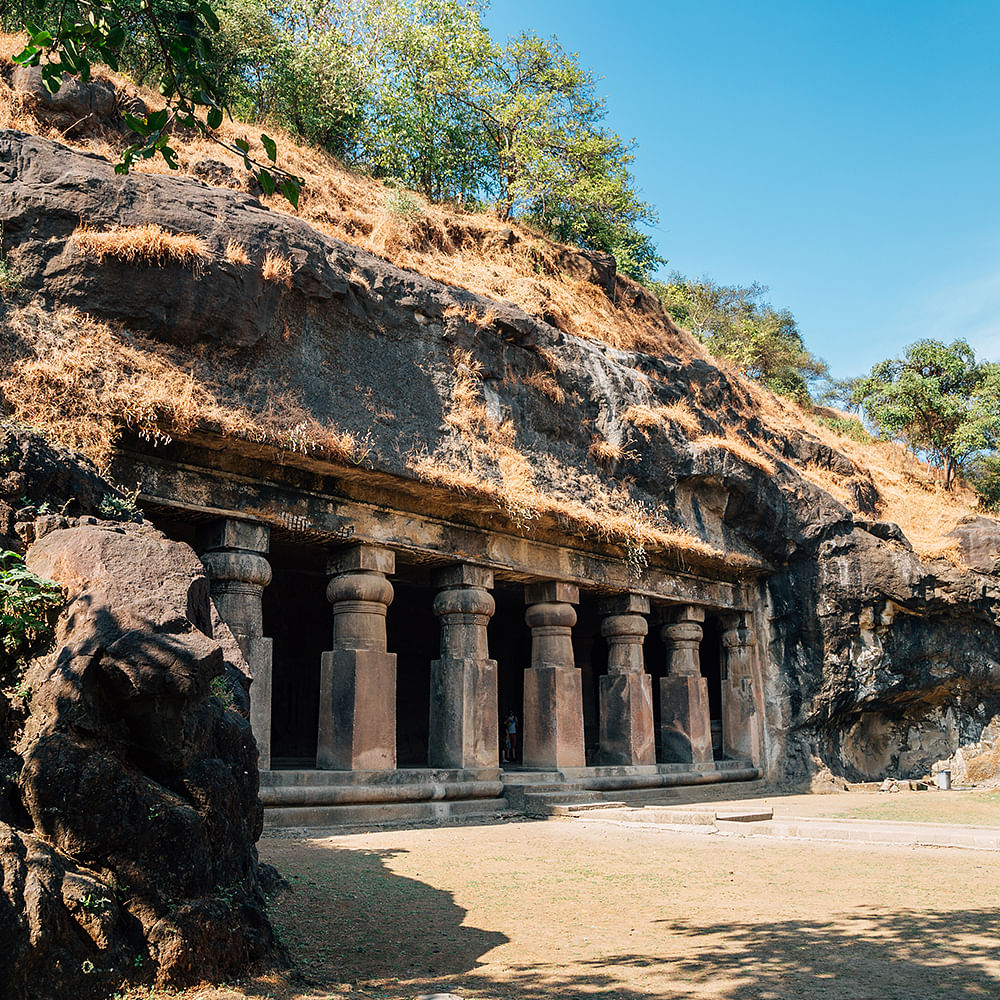If dabbling in history and learning about past civilisations is any motivation for your travels, then we know for a fact that Elephanata Caves are well on your list. From how it got its name to the captivating mythological tale that surrounds the caves, it is a space brimming with a fascinating history and was recognised as a UNESCO Heritage Site in 1987.
Elephanta Caves is located in the western part of India, on an island fairly close to Bombay. It's a collection of rock art that is deemed to be the finest expression of Lord Shiva. The caves' emergence is said to have been around from the mid-fifth to sixth century BC and are primarily divided into two sections made out of basalt rock. The Portuguese named the caves 'Elephanta' after they found a large stone elephant near their landing space. The collection has a total of seven caves, the most visited and most famous remains the Cave 1.
Cave 1
At Cave 1, you will be greeted by a seven-meter-high statue of 'Sadashiva' that represents the three main aspects of Shiva—the creator, the preserver, and the destroyer— respectively identified with Aghora or Bhairava (left half), Taptapurusha or Mahadeva (central full face), and Vamadeva or Uma (right half). The marvel-worthy, rock-cut architecture includes pillar components like the placement and subdivision of caves and the provision of a sanctum that relays the architectural innovation of that time. The walls are covered with Hindu symbolism, embodying the long artistic tradition, along with rasas and beliefs of the system. In the main cave, you will also find sculptures and paintings of Ravananugraha, Shiva-Parvati, Mount Kailash, Ardhanarishvara, Sadashiva Trimurti, Gangadhara, Wedding of Shiva, Shiva slaying Andhaka, Nataraja, Yogishvara, Linga and more.
Caves 2-5
Destroyed and restored in the 1970s, Caves 2-5 are on the southeast portion. They encapsulate the pathway to the main shrine, where you can spot some pillars, ruins, and Lingam structures that are unfortunately deteriorating. Cave 5 is damaged to the point where no artistic remains are left.
Caves 6-7
Located across the ravine from Cave 1, Caves 6 and 7 are known as the Buddhist caves. With three chambers and Sitbai's temple, Cave 6 was historically converted into a Christian church when the island was under colonial rule. Cave 7 is a mound where the last remains of Budha Stupa were found.
Mythology and History
The caves' mythological nuances are found in Hindu and Jain Vedic texts on Rudra, Shiva, the epics, the Puranas, and the Pashupaat Shaivism literature. Motifs and scriptures that inspired the cave's narrative represent the long history of Hindu culture and heritage. It is said that Lord Shiva created this space to meditate with goddess Parvati, but a demon named Tripurasura eventually destroyed and disrupted it.
Timings: 9:30 AM - 5:30 PM (Closed on Mondays)
Best Time To Visit: We recommend planning your trip during the winter months, from November to February. Avoid the monsoon season.
Entry Fee: INR 40, video camera requires an extra charge of INR 25; INR 600 for foreigners

